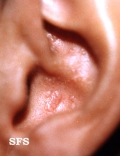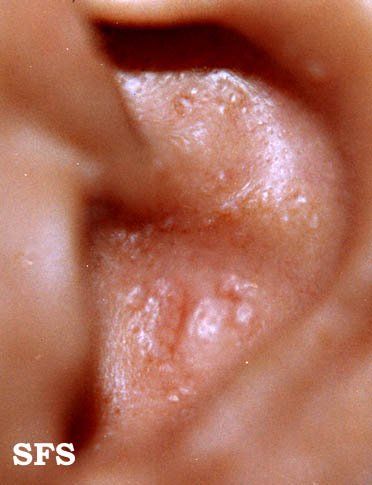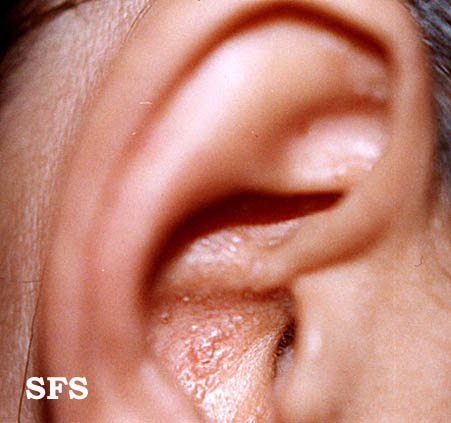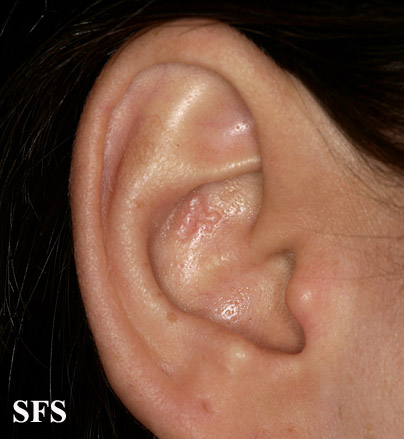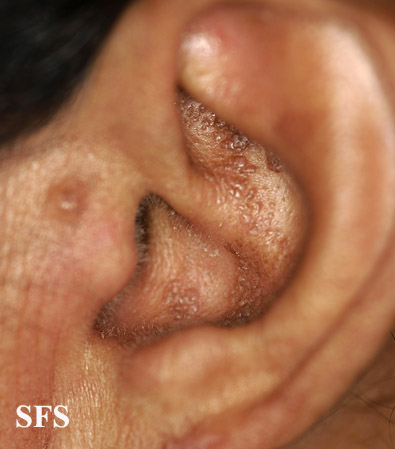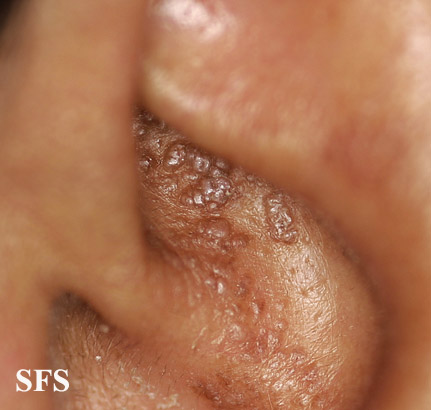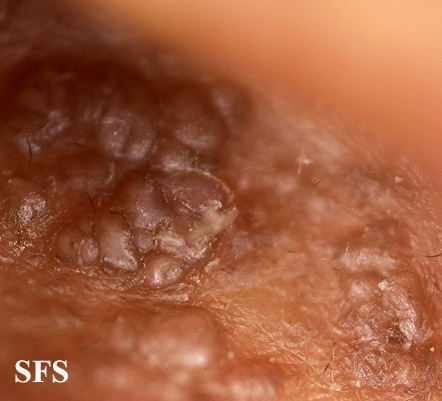Familial amyloidosis physical examination
|
Familial amyloidosis Microchapters |
|
Diagnosis |
|---|
|
Treatment |
|
Case Studies |
|
Familial amyloidosis physical examination On the Web |
|
American Roentgen Ray Society Images of Familial amyloidosis physical examination |
|
Risk calculators and risk factors for Familial amyloidosis physical examination |
Editor-In-Chief: C. Michael Gibson, M.S., M.D. [1]; Associate Editor(s)-in-Chief: Farima Kahe M.D. [2]Fahimeh Shojaei, M.D.
Overview
Physical examination of patients with familial amyloidosis is usually remarkable for hypertension, tachycardia, waxy thickening, easy bruising, purpura, macroglossia, parotid gland and submandibular gland enlargement, edema, numbness, hepatomegaly and paresthesia.
Physical Examination
Physical examination of patients with familial amyloidosis is usually remarkable for hypertension, tachycardia, waxy thickening, easy bruising, purpura, macroglossia, parotid gland and submandibular gland enlargement, edema, numbness, hepatomegaly and paresthesia.[1][2][3][4]
Appearance of the Patient
- Patients with familial amyloidosis usually appear normal.
Vital signs
Skin
- Waxy thickening
- Easy bruising (ecchymoses)
- Subcutaneous nodules or plaques
- Purpura
- Petechiae
- Edema
- Diffuse or patchy alopecia
- Nail dystrophy
- Brittle nails
HEENT
- Vitreous opacities is a charactristic finding in ATTR familial amyloidosis.
- Macroglossia
- Parotid gland enlargement
- Submandibular gland enlargement
- Peri-orbital purpura
- Raised intraocular pressure may be seen.
- Visual and hearing loss may be seen.
Neck
- Neck examination of patients with familial amyloidosis is usually normal.
Lungs
Heart
Abdomen
Back
- Back examination of patients with familial amyloidosis is usually normal.
Genitourinary
- Genitourinary examination of patients with familial amyloidosis is usually normal.
Neuromuscular
- Numbness
- Paresthesia
- Pain
Extremities
- Edema
- Carpal tunnel syndrome
- Numbness of the fingers and toes
- Raynaud phenomenon
References
- ↑ Wechalekar AD, Gillmore JD, Hawkins PN (June 2016). "Systemic amyloidosis". Lancet. 387 (10038): 2641–2654. doi:10.1016/S0140-6736(15)01274-X. PMID 26719234.
- ↑ Pribitkin E, Friedman O, O'Hara B, Cunnane MF, Levi D, Rosen M, Keane WM, Sataloff RT (December 2003). "Amyloidosis of the upper aerodigestive tract". Laryngoscope. 113 (12): 2095–101. doi:10.1097/00005537-200312000-00007. PMID 14660909.
- ↑ Shin SC, Robinson-Papp J (2012). "Amyloid neuropathies". Mt. Sinai J. Med. 79 (6): 733–48. doi:10.1002/msj.21352. PMC 3531896. PMID 23239211.
- ↑ Sandgren O (1995). "Ocular amyloidosis, with special reference to the hereditary forms with vitreous involvement". Surv Ophthalmol. 40 (3): 173–96. doi:10.1016/s0039-6257(95)80025-5. PMID 8599154.
